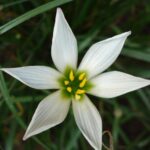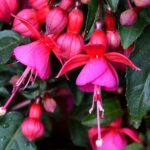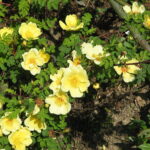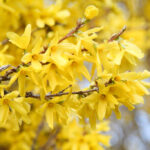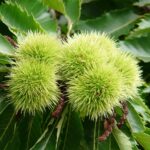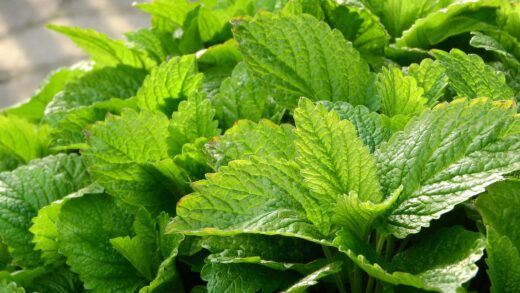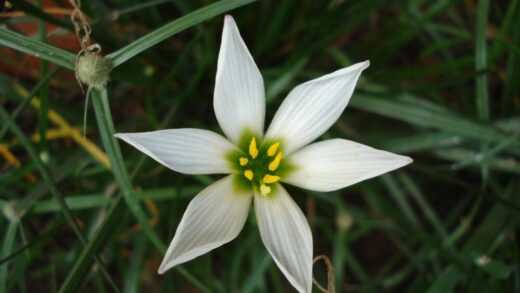Planting and propagation of japanese barberry
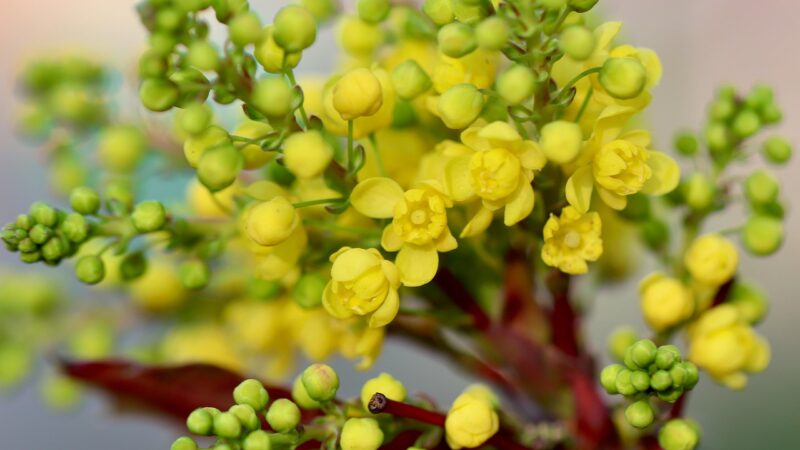
The successful establishment of Japanese barberry in a landscape begins with proper planting techniques, which create the foundation for a healthy and vigorous shrub. This process is not merely about digging a hole and inserting the plant; it requires careful consideration of timing, site preparation, and the specific needs of the root system to ensure a smooth transition into its new environment. Similarly, understanding the methods of propagation allows a gardener to multiply their stock, whether for creating a cohesive hedge or sharing a particularly desirable cultivar. Both planting and propagation are fundamental horticultural skills that empower a gardener to cultivate these versatile shrubs with confidence and achieve professional-quality results in their own outdoor space.
Before any planting occurs, a thorough assessment of the chosen site is paramount. This involves evaluating factors such as sun exposure, soil composition, and drainage, as Japanese barberry thrives in full sun and well-drained soil. Preparing the site may involve amending the soil with organic matter to improve its structure and fertility, ensuring the location can support robust growth. The timing of planting is also critical, with the cooler, more temperate conditions of spring or autumn being ideal, as this minimizes the risk of heat and drought stress on the young, developing plant.
Once the site is prepared, the focus shifts to the physical act of planting. The depth and width of the planting hole, the handling of the root ball, and the backfilling process are all crucial steps that directly impact the plant’s ability to establish itself. A properly planted shrub will quickly develop a strong root system that can efficiently absorb water and nutrients, leading to faster growth and greater resilience. Mistakes made at this stage, such as planting too deeply or failing to properly hydrate the root ball, can lead to long-term health problems or even plant failure.
Propagation offers a rewarding way to increase the number of Japanese barberry plants from an existing specimen. The most common and reliable method for gardeners is through semi-hardwood cuttings, which allows for the creation of genetically identical clones of the parent plant. This technique preserves the unique characteristics of a specific cultivar, such as its foliage color or growth habit. While propagation from seed is also possible, it is a longer process and may not result in plants that are true to the parent type, making cuttings the preferred method for most horticultural applications.
Preparing the site for planting
The initial step in preparing a site for Japanese barberry is to confirm that the location meets its primary requirement for sunlight. An area that receives a minimum of six hours of direct sun each day is essential for the plant to develop its characteristic dense form and, for colored-leaf varieties, their most vibrant foliage. While the shrub can tolerate partial shade, its appearance may be compromised, with sparser growth and a reversion of purple or gold leaves to a less striking shade of green. Therefore, careful observation of the site’s light patterns throughout the day is a critical first move.
More articles on this topic
Once the light conditions are deemed suitable, the next focus is on the soil itself, with drainage being the most important physical property. To test for drainage, one can dig a hole approximately one foot deep and one foot wide and fill it with water; if the water has not drained away within twelve hours, the site has poor drainage that must be addressed. In such cases, the soil should be amended by incorporating generous amounts of organic material like compost or coarse sand to improve its porosity. Alternatively, planting the barberry in a raised bed or on a gentle slope can also effectively solve drainage issues.
After ensuring adequate drainage, the soil should be prepared for planting by clearing a wide area of any existing weeds, grass, or other competing vegetation. This is important because it eliminates competition for water and nutrients, giving the new shrub the best possible start. The cleared area should be at least two to three times the diameter of the anticipated root ball of the plant. Loosening the soil in this wider area with a garden fork or tiller will further encourage the roots to spread out and establish themselves quickly in their new home.
Finally, while Japanese barberry is not a heavy feeder, enriching the soil before planting can be beneficial, especially in nutrient-poor soils. Incorporating a layer of well-rotted compost or a balanced, slow-release granular fertilizer into the prepared soil provides a valuable source of nutrients for the young plant as it develops its root system. This amendment should be thoroughly mixed into the top six to eight inches of soil throughout the entire planting area, not just concentrated in the planting hole, to promote widespread root growth.
The process of planting a new shrub
When the day comes to plant the Japanese barberry, the process should begin with the preparation of the shrub itself, especially if it is a container-grown plant. It is crucial to water the plant thoroughly in its pot an hour or two before planting to ensure the root ball is fully hydrated. When removing the plant from its container, one should handle it by the root ball rather than the stems to avoid damage. If the roots are tightly wound or circling the bottom of the pot—a condition known as being root-bound—they must be gently teased apart or scored with a knife in several places to encourage them to grow outward into the surrounding soil.
More articles on this topic
The planting hole should be dug to be approximately twice as wide as the root ball but no deeper. The width is important to allow the newly developing roots to easily penetrate the loosened backfill soil. Planting the shrub at the correct depth is absolutely critical; the top of the root ball should sit level with or even slightly above the surrounding ground level. Planting too deeply is one of the most common and serious planting errors, as it can lead to stem rot and deprive the roots of necessary oxygen, severely hindering the plant’s establishment and long-term health.
After placing the shrub in the center of the hole and ensuring it is positioned vertically, the process of backfilling begins. The soil that was originally excavated from the hole, ideally amended as previously discussed, should be used to fill in the space around the root ball. It is important to add the soil back in stages, gently tamping it down with your hands to eliminate any large air pockets, which can dry out roots. Avoid compacting the soil too firmly, as this can impede both water penetration and root growth.
Once the hole is completely backfilled, the final steps are to water the plant thoroughly and apply mulch. A deep and slow watering is necessary to settle the soil around the root ball and eliminate any remaining air pockets. Building a small earthen berm or “water-well” around the perimeter of the planting area can help to concentrate this initial watering over the root zone. Finally, applying a two-to-three-inch layer of organic mulch over the planting area will help conserve moisture, suppress weeds, and regulate soil temperature, providing a nurturing environment for the newly planted shrub.
Propagation from semi-hardwood cuttings
Propagating Japanese barberry from semi-hardwood cuttings is a reliable and effective method for creating new plants that are identical to the parent. The ideal time to take these cuttings is from mid-summer to early autumn, when the current season’s growth has started to mature. At this stage, the stems are firm enough to resist wilting but still flexible enough to root readily. One should select healthy, vigorous stems from the parent plant, choosing those that are free from any signs of disease, pests, or stress.
To prepare the cuttings, a section of stem about four to six inches long should be cut from the parent plant using a clean, sharp pair of pruning shears or a knife. The cut should be made just below a leaf node, which is the small bump on the stem where a leaf emerges. The lower leaves from the bottom half of the cutting should then be carefully stripped away to prevent them from rotting when placed in the rooting medium. If the parent plant was in flower, any flower buds should also be removed, as they can divert energy away from the crucial process of root development.
The base of each cutting should then be treated with a rooting hormone to significantly increase the chances of successful rooting. The bottom inch of the cutting is dipped into the powdered or liquid hormone, and any excess is gently tapped off. The prepared cuttings are then ready to be inserted into a rooting medium. A suitable medium is a sterile, well-draining mix, such as a combination of perlite and peat moss, which provides the right balance of moisture retention and aeration necessary for root formation.
The cuttings should be inserted into the medium about one to two inches deep, just enough to hold them upright. After planting, the medium should be watered gently, and the pot or tray should be placed in a warm, bright location out of direct sunlight. To maintain high humidity, which is critical for preventing the cuttings from drying out, the container can be covered with a clear plastic bag or dome. The cuttings should be checked regularly for rooting, which typically occurs within four to eight weeks; a gentle tug on a cutting that resists being pulled will indicate that roots have formed.
Propagation from seed
While propagating Japanese barberry from cuttings is the preferred method for cloning specific cultivars, growing them from seed can be an interesting and rewarding, albeit less predictable, endeavor. The first step is to collect the seeds, which are found inside the small, bright red berries that mature on the plant in the autumn. The berries should be harvested when they are fully ripe, and the seeds must then be extracted from the pulp. This is typically done by mashing the berries and washing the mixture with water, allowing the viable seeds to sink to the bottom while the pulp and skin float away.
Japanese barberry seeds have a dormancy mechanism that needs to be broken before they will germinate. This requires a process called stratification, which simulates the natural winter conditions that the seeds would experience outdoors. After cleaning, the seeds should be mixed with a small amount of moist but not wet medium, such as sand or peat moss, and placed in a sealed plastic bag. This bag is then stored in a refrigerator for a period of 60 to 90 days, a process known as cold-moist stratification. This cold period is essential to trigger the biochemical changes necessary for germination.
Following the stratification period, the seeds can be sown. They should be planted in a well-draining seed-starting mix in pots or trays, sown at a depth of about a quarter of an inch. The soil should be kept consistently moist but not waterlogged, and the containers should be placed in a warm, bright location. Germination can be erratic and may take several weeks to a few months to occur. Patience is key during this stage, as not all seeds may sprout at the same time.
Once the seedlings have emerged and developed their first true leaves, they can be carefully transplanted into individual pots to continue growing. It is important to handle them gently to avoid damaging the delicate young roots. The seedlings should be allowed to grow in their pots until they are strong and large enough to be planted out in the garden, which is usually best done the following spring. It is important to remember that seedlings grown from hybrid cultivars may not resemble the parent plant, potentially resulting in a variety of forms and foliage colors.








